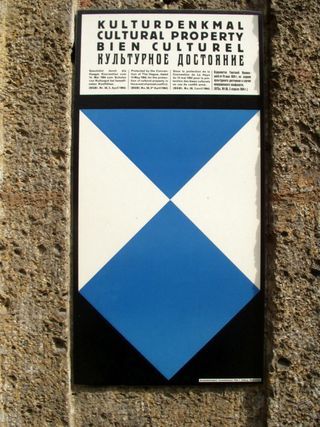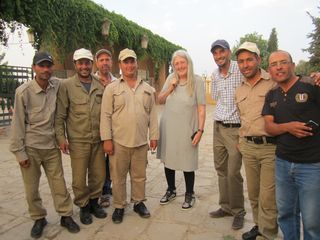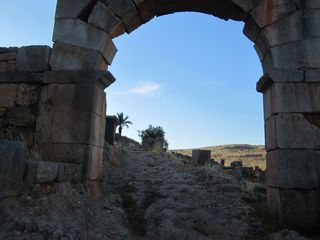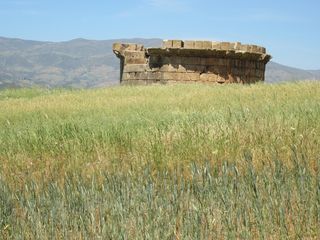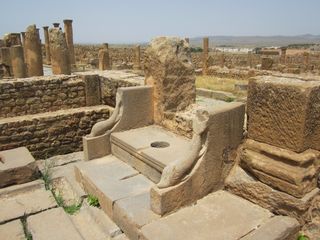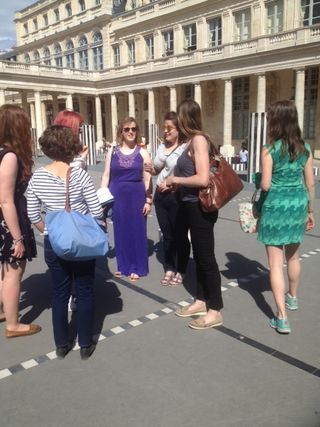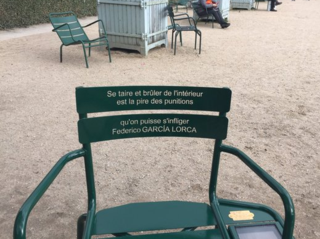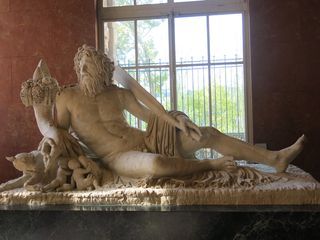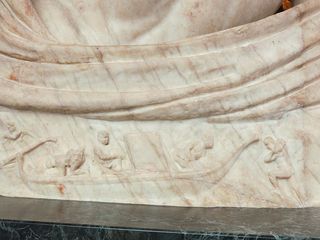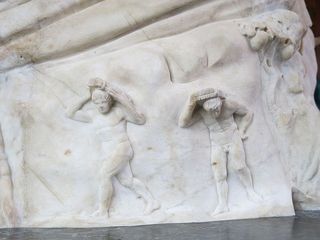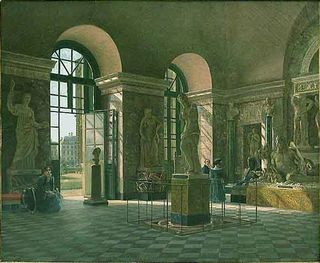Mary Beard's Blog, page 13
May 31, 2016
How to pay for your TV licence if you are over 75
One of the proposals in the White Paper on the BBC was that there should be an easier way for those over 75 to pay their BBC licence fee, even though they are entitled to have the BBC free. Amongst all the things that I objected to in the White Paper (you can get a full version here), this seemed sensible. Opt-in benefits usually discriminate against those they are intended to help. But opt-out should be easy, even if it amounts to no more than a note with a bank account number saying how you can pay this money back if you would rather not receive it (phrasing has to be careful. otherwise the virtuus poor pay back, while rich don't notice).
Currently it is a major struggle not to receive your free licence fee, even if you try to avoid it.
Someone I know well, who is over 75, got in touch with the licencing department, in an attempt to begin paying for his licence again. It is a he, and he simply wrote on the online contact form: "I am 77. I would like to restart paying my license". This is what he received in reply. I have removed the names.
"Dear xxxxxxxx
Thank you for contacting us. It is currently the policy of TV Licensing to always provide the free licence when we are aware that the licence holder is over 75 years of age. Therefore, we are unable to process your request to pay. I hope this has been of help and explained the situation.
Yours sincerely xxxxxxxxxxx
TV Licensing
Can I get this in a more accessible format? Yes. If you have sight problems, you can get this information by email or in Braille, large print or audio by calling 0300 790 6076. Also, a textphone facility for the deaf, hard of hearing and speech impaired is available on 0300 790 6050."
Now I think that this was not at all "of help" and did not begin to "explain the situation".
Maybe he should have persevered. But if we could make this procedure simple and possible, we might make just a bit of difference to the cash-strapped BBC.
May 28, 2016
Always the bridesmaid..?
I had really good news this week. I was in my Faculty office on Tuesday at about 6.15 pm packing up to bike home, when the phone rang from (as the display flashed up) for a Spanish number. It turned out to be an extremely nice man from the Princess of Asturias Foundation to alert me that the jury had just decided to award me the 2016 Princess of Asturias Foundation Award for Social Sciences. It was to be announced the next day at 12.00 and I was to keep mum until then.
I knew something about these prizes before and was obviously extremely chuffed (you dont get phonecalls like that very often -- and I cancelled my decision to make it an alcohol-free day). But I hadn't quite realised how very grand it was until I looked at the previous laureates in my own and other categories, from David Attenborough, Tzvetan Todorov and Mary Robinson in my own category to Margaret Atwood, Leonard Cohen and Leonardo Padura in literature (that's Padura arriving above), Michael Schumacher in Sport and J K Rowling in Concord. That was all a bit humbling.
The award comes with a nice cash prize, but that wasn't what mattered most this week (I know people always say that, but it is true). It was the fact that people, not on your back door step, have recognised what you do. If I have had a 'project' over the last few years it has been to continue doing top flight specialist academic work, while also sharing the fruits of that with a wider public. I hate with a vengeance the kind of popularising history (or popularising anything) that assumes that that wider public can be fobbed off with some over-simplified, dumbed-down version of what academics really talk about. It has always seemed to me that you can remove some ofthe jargon, talk clearly and capture precisely the issues that are those under debate. So I was particularly pleased when I saw these words of the jury, referring to my 'talent for making specialized knowledge both accessible and relevant to the general public'. That's exactly what I have wanted to do.
It was also nice (an unworthy confession is coming up!) actually to win something. Now, I have been absolutely delighted with how SPQR has gone down with critics, and with the buying punters. I cant really imagine how it could have done better, thanks in part to the big efforts of others (it's a good book, I immodestly say, but lots of good books dont get attention or find buyers). And I have also been delighted that it has been shortlisted for all sorts of literary prizes. To me, shortlisting matters the most. It's a real vote of confidence in the product, after which the final winning choice must always be a bit random and depend on the unpredictable personal preferences of the judges (to put it another way, you could almost guarantee that a different group of judges would choose a different winner -- and that's certainly been the case on the panels I've been on). That said, I was beginning to get a bit of an 'always the bridesmaid' feeling and to wonder if, bauble as it was, it wouldn't be nice actually to win something one day.
And indeed, as I have discovered this week, it is nice. I am so very grateful to the judges for picking me, and really looking forward to going to Oviedo in October to receive the award. The aim for this summer has to be to get some conversational Spanish under my belt. I can just about read the language (especially when it is about Roman history), but I need to do a bit better than that in the autumn.
May 24, 2016
Surprising benefactions
Universities are now major fund-raising organisations; and I guess that is one of the biggest changes in the whole higher education culture over my career. You can have different views of this. On one side, it can seem like a useful way of channelling 'spare cash' into a good cause, and of raising money from generous people to support what the government no longer pays for. And generous and self-effacing many benefactors are, as I know from my own college.
It can even be a way of directing money acquired in, to put this mildly, dubious ways to noble projects. I never quite know whether I think that it is good idea to convert (say) the profits of tobacco into the support of education, or whether the support of education is a merely a fig leaf to give (say) the tobacco industry respectability. I prefer to think the former, but it's a dilemma that actually goes back a lot further than modern money raising campaigns or, for that matter, than Cecil Rhodes. I am both grateful to those ancient founders whose portraits I see looking sternly down from college dining halls in Cambridge, and suspect that their foundations have done a lot to launder their posthumous reputations.
On the other hand, there are those on the inside who look at a load of academics, under the command of their now powerful Development Offices, fawning after a handful of the super-rich -- and are heard to mutter under their breath "licensed begging" (or worse).
What is surprising then, or perhaps cheering, is that the larger part of the major donations my own Faculty has received over the last 100 years have come out of the blue, from donors who had not been 'courted' at all. And yesterday we were the beneficiaries of one of those: the Reverend Canon J H Gray ('Joey' to his mates).
Gray gave a thousand pounds in the 1920s to endow an annual series of lectures in the Classics Faculty in Cambridge, and his story is retold to the assembled audience every year by whoever is Chair of the Faculty Board (this year it was the eloquent James Clackson who reminded us all of the circumstances).
Gray was, it is true, a classical fellow of Queens' College for more than 50 years and did a bit of work occasionally on Roman comedy. But his real passions were quite different: the Masons (he was made Provincial Grand Master of Cambridge in 1914) and the Cambridge University Rugby Club (of which he was President from 1895 till his death in 1932). In the late 20s to mark his long presidency the club had a whip round and presented him with the said thousand funds, to devote to whatever cause he wished. It is hard to resist the thought that the rugby lads had been fairly confident that Gray would plough their money back into club facilities. But instead he took the cash and gave it to the Classics Faculty to endow the J H Gray lectures -- as his obituary in the College mag said, "thus making the gladiators of the football field into patrons of the humaner letters".
This year's lecturer is Emma Dench from Harvard, and she started her series, as many lecturers do, with the reflection that Gray himself ("a vigorous Conservative . . . an almost perfect incarnation of John Bull in cap and gown") would not have much liked what he had to say (though his obituary is keen to stress that he could actually be very nice "even to individual socialists and foreigners"). But he's a John Bull that we cause tp be grateful to -- for a surprise gift that has launched over the years some excellent talks which have gone on to become excellent books (by inter alios, G E M de Ste Croix, Germaine Greer, John Sullivan, Peter Stothard, Keith Hopkins, Froma Zeitlin, Nicholas Purcell and many more).
May 20, 2016
Good news for culture in the small print of the Queen's Speech
The headlines of the Queen's Speech have been rather dreary, and in truth one can only feel sorry for the dear old Queen for having to read the "limp" thing out. But beyond the headlines, and not much reported, has been some good news for cultural property.
Things have actually been moving in this area under this government, I have to admit (much as it is not my cup of tea). Last year they launched a ��30 million "cultural protection fund" for initiatives to support the protection and restoration of cultural heritage threatened in war zones. OK it's a pity it's necessary, and maybe too little too late; but it is better than nothing.
Beyond that, the plans for the forthcoming parliament include formally ratifying the Hague Convention on Cultural Property in armed conflict, first agreed in 1954, plus two later protocols. We signed up to the original agreement, but we never went the whole hog in ratifying it through parliament.
This will mean some quite important changes -- including making it an offence to deal in cultural property illegally exported from a war zone (which is what we suspect is happening right now to material from Syria), and the formal recognition of the "Blue Shield" sign for property to be protected in war. We shouldn't imagine that this is a total solution, but it has to be better than nothing. And we shouldn't feel too "holier than thou", as the UK over the last hundred years has done its fair share in the destruction of cultural property (that's partly why the Hague Convention was drawn up)
But it's still good that someone has got this onto the parliamentary agenda. Perhaps it really is a priority of the Minister of Culture. But my guess is that there a load of seriously well-intentioned civil servants at the DCMS who have kept this issue in the parliamentary sight. And all power to their arm.
May 18, 2016
Imperial verses
This is another instalment about my "emperors" project. One of the stars of the book are, I think, going to be the 11 emperor portraits (Julius Caesar to Titus) that Titian did for Federico II Gonzaga at Mantua in the late 1530s; they were all together in a room in the Ducal Palace, whose overall design scheme, and other paintings, including emblematic scenes from the life of each of the emperors, was in the hands of Giulio Romano.
There are all kinds of puzzles about these, including why there were only 11 out of a collection that you would expect to be 12 (the twelfth, Domitian, ws added later, probably in an adjoining room). The idea that Titian just couldn't make the full twelve fit has always seemed very unlikely to me.
The puzzles are, of course, intensified, by the fact that Titian's portraits do not survive. They were acquired by Charles I and brought to England (along with some of the Giulio Romano paintings), and then -- after Charles's execution -- they were sold off to Spain where they were destroyed in a fire at the Royal Alcazar in 1734. So we have to rely on copies of them, notably a series of prints made by Aegidius Sadeler some time around 1600: these comprised Titian's 11, the additional Domitian, as well as 12 empresses (mostly wives, but one mother) to match.
But what is also interesting to me is that each one of these comes with a set of verses in (rather hard, at least for me) Latin -- which in a way represent an almost contemporary reaction to these images. Very few art historians seem to have been much concerned with these: they either refer simply to "verses in Latin" or, at most, include a Latin text without translation or commentary. In fact, the verses are decidedly weird and not in general very admirative of the emperors concerned.
The Julius Caesar, for example, starts out by referring to the bad omen in the way he wore his toga: omine discincti metuendus Caesar amictus (lit. Caesar, to be feared because of the omen of his ungirt cloak). And it goes on to talk about his dream of sleeping with his mother, ending (after a nod to his restoration of order) with the claim that he was "joined to the city in unspeakable ways" (iunctus et infandis cui fuit ille modis). The print is above (and sorry that the final couple of letters on the right hand side have got lost.)
How typical, I wonder, is this rather negative view of Titian's subjects? And how unflattering were his painting? Were they simply rather positive attempts to put the Gonzaga family into the "glorious" traditions of Roman imperial power?
I haven't fully worked my way through the ladies yet. But there are other issues there. Above is Pompeia, Caesar's second wife and the one divorced after rumours of her affair with Clodius ('because Caesar's wife must be above suspicion'). She was the daughter of Quintus Pompeius Rufus, who had been married to Sulla's daughter, and who was murdered in 88 BC.
But there is no mention in the verse of the rumours about Clodius or the divorce. It is mostly to do with the relationship between Caesar and her father, and how she was a pledge of alliance between them (Qualis amicitiam patris te Caesar adegit/ Velle amor et nexu sanguinis esse ratam?). Caeasr, however, was no more than twelve years old when Pompeius Rufus was killed. It's hard to resist the conclusion that Sadeler (or his tame poet) has assumed that this Pompeia was actually the daughter of Pompey the Great!
It's yet another example of the knowledge of who all these imperial character were being sometimes as hazy 400 years ago as it is now.
May 13, 2016
Lights out
Please forgive a blog on what may seem like a little Cambridge issue, but it has -- I hope -- a further reach. It's about the extremely handsome Victorian (I guess) street lights that stand along Burrell's Walk (which is the lane that runs next to the University Library, between Grange Road and Queens' Road).
The husband was cycling along here the other day when he spotted notices pinned to these by the "Street LIghting PFI" ( which, to you and me, is another name for Balfour Beatty working for the local council -- I could put it less politely). I am sure that some street lights do need upgrading and students, especially, are concerned about the safety of Cambridge in the dark. But this major campaign of "improvement" (puffed here) has been a bit of a mixed blessings. I really dont see why there has to be a trade-off between decent light and aesthetics. And there are reports from some parts of town that the lights are so bright that the birds are awake all night, having no idea that it is bedtime.
Anyway along Burrell's Walk some of the lights appeared to be identified as faulty. Others had a much more sinister label.
These, as you can just see, were marked out for "permanent removal".
What justifies this vandalism is not clear. It could be, I suppose, that there are overwhelming safety, or other, reasons for taking them down. Or maybe "permanent removal" doesnt really mean what it says (let's hope so). But, unless I have overlooked something in the small print, there is nothing on the streetlighting website about them (although there are some suspicious blue dots in the right place on one of the maps), and a quick search of the local paper has produced nothing. It's hard not to suspect a combination of philistinism and convenience.
Surely there are ways of achieving good lighting AND keeping a nice little gem of a Cambridge lane in its traditional state.
May 10, 2016
Timgad TV
I think it's fair to say that I got a huge amount out of every place -- familiar and unfamilar -- that we went when we were making Ultimate Rome. But if there was one completely unforgettable place it was the Roman town of Timgad in Algeria. Algeria is not an easy country to visit (though it is more possible than many people think) and not as straightforward as some to get permission to film (here we have to give a big thanks to the British Ambassador, who did a lot to smooth our path). But the rewards are worth all the effort.
We saw two sites in particular which were in their different ways breathtaking. The first was the little town of Tiddis, not far from Constantine in the East.
This must count as one of the most bijou Roman towns anywhere in the world. It's a village more than a town and everything is on the most dinky scale (one of the grandest bits is that arch above). It was hardly one of the movers and shakers in the Mediterranean, but it did have one famous son and a perhaps unexpected connection with Britain at the other side of the empire.
The famous son was Quintus Lollius Urbicus, who was Governor of Britain in the mid second century AD and who started the Antonine Wall, north of Hadrian's Wall. Heaven knows what he made of the northern climes, but he certainly moved back to North Africa eventually and died there. This is his rather splendid tomb (along with other members on his family), now a bit wobbly and right on the middle of a cornfield that could have come from the set of Gladiator.
But even better is the much bigger town of Timgad, once a settlement of retired Roman soldiers, on the fringes of the Sahara.
This really has everything. It's got one of the poshest sets of loos anywhere in the Roman world (carefully restored by the French excavators) . . .
. . . and one of the very few Roman public libraries to have ever survived (a nice addition to a town that had started out as a retirement home for ex-squaddies).
But what I shall remember as much as the Roman remains are all the workers on the site who were assigned to help us. They were a brilliant crew, who with no previous experience adeptly turned themselves into camera assistants and deputy sound men, as well as kit carriers and (very necessary, as it was so damn hot) water providers. You can see me and the local crew at the top of this post, "Timgad TV" we called ourselves -- a wonderful, memorable few days of cross cultural cooperation.
May 8, 2016
The Tiber in Paris
Regular readers of the blog will probably recall that every May, the Newnham Classics finalists take off for a day in Paris (and usually in the Louvre) -- thanks to a generous benefactor. It's partly fun, partly seriously educational (a good two and a half hours in the Louvre is an improving experience for any classicist), and it's quite exhausting (we have to leave Cambridge at 5.30 am). As an event for exam term it is second to none. The students get a good lunch (we went for the second year running to La Table du Palais Royale, which is just ten minutes walk from the Louvre, has great food and on a Saturday lunchtime is not heaving with people. It also does them no harm to get exhausted then sleep it off.
This is us enjoying the architecture of the Palais Royale itself
-- which is one of my favourite spaces in Paris, especially now that the garden section has been equipped with some great green chairs, emblazoning a line of French poetry: chaises-po��mes, they're called.
And the Louvre always springs surprises.
This time we spent longer than usual examining this image of the River Tiber, found near the Pantheon in Rome in 1512, brought to Paris by Napoleon and one of the pieces that never went back.
What caught our attention was not just the cricket bat oar, and the rather splendid cornucopia (which appears to be more original than you might imagine). It was the tiny "frieze' that decorated the base of the thing around the sides and the back. The label assured us that these were scenes from the foundation of Rome, but they didn't look straightforwardly that to us (though I have discovered that there is a 1944 article by J. Le Gall, which I have not yet seen, which presumably argues for this). To our eyes it all looked more like the celebration of the Tiber as waterway, .with its commercial boats and hauliers etc (though it is true that round the corner from what you see here there were a few more river gods, which seemed a bit more mythical!)
All in all a bit of a puzzle. One thing's for sure though, this tremendous bit of second century AD (?) statuary isnt quite the celebrarity work of art it once was. Not many people yesterday were paying it much attention at the end of the Roman gallery. In the good old days it shared spece with the Venus de Milo, no less, and indeed it was the Tiber not the Venus that gave its name to the room: Salle du Tibre. This painting by Warlencourt shows the layout.
May 6, 2016
Blog Changes update
Morning all. The main page has changed as you have noticed. This blog is still in Typepad but it will change to Wordpress once we have got a few issues about the processing of comments ironed out (I'm sure you will want that!).
Once that is done, I think you will have to re-register in order to comment. But it should be simple.
May 4, 2016
Blog changes
Over the next few days this blog will follow the rest of the TLS website to a new system. You will still be able to access this for some time, and the old posts will migrate to the new site. But all new posts will be on the new system. To find that, go to the TLS web page and access the blog from there and bookmark the new URL. I think when you first comment on the new system, you will have to 'register', but that will only be necessary once.
I am assured that this is straightforward!
Mary Beard's Blog
- Mary Beard's profile
- 4110 followers






